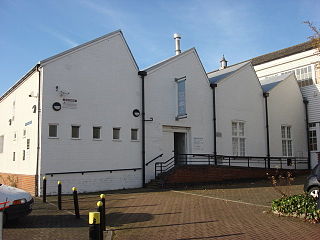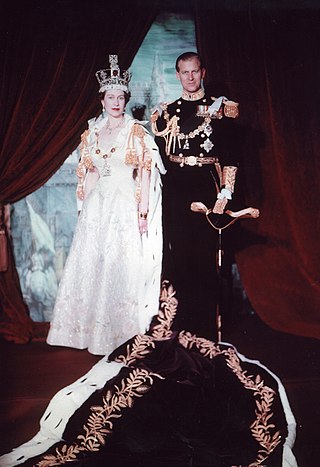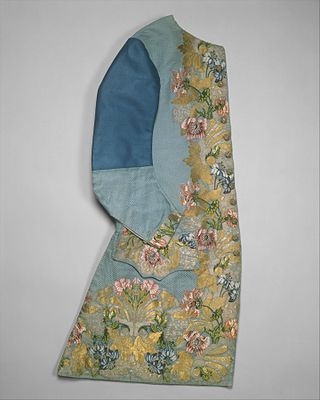

Stevengraphs are pictures woven from silk, originally created by Thomas Stevens in the 19th century. They were popular collectable items again during the revival of interest in Victoriana in the 1960s and 1970s. [1]


Stevengraphs are pictures woven from silk, originally created by Thomas Stevens in the 19th century. They were popular collectable items again during the revival of interest in Victoriana in the 1960s and 1970s. [1]

In the mid-19th century the town of Coventry, England, was the centre of a ribbon weaving industry. In 1860 the Cobden–Chevalier Treaty was signed; this free trade treaty introduced new competition into the industry, leading to a collapse in the local economy.
Thomas Stevens, a local weaver, responded by adapting the Jacquard looms used in Coventry to weave colourful pictures from silk. [2] By 1862, Stevens could produce four different designs and by the late 1880s this had grown to over 900; they became known as "Stevengraphs", after their maker. Many of these designs were used to produce bookmarks, while others were used to make greeting cards and other silk objects. [3]
By the 1930s, Stevengraphs were considered collectable items, but the hobby was considered eccentric and mainly confined to female collectors. During the Second World War Coventry was attacked by German bombers; on 14 November 1940 the Coventry Blitz occurred, destroying the Stevens factory and apparently all records of the Stevengraphs.
In the late 1950s it emerged that Henry Stephens, a descendant of Thomas, had saved one of the pattern books the night before the attack and kept it in safe storage; Henry donated it to the Coventry City Council, who in turn entrusted it with the Herbert Art Gallery and Museum. Stevengraphs became valuable, with more male collectors entering the hobby. [4] Prices rose, particularly for unusual or rarer images less popular during the Victorian period. [3]
Stevengraphs normally measured 140mm x 64mm (5½ x 2½ inch) and were often mounted on cardboard. A printed label on the reverse would indicate that the design was registered and could not be copied. Several other Coventry firms also produced silk-work pictures including W H Grant and Welch & Lambton. [5]
Stevengraphs are held in collections at the Bodleian Library , [6] the Science Museum, [7] the Victoria and Albert Museum [8] and the National Trust property Greenway House, near Brixham, Devon. [9]
Ikat is a dyeing technique from Southeast Asia used to pattern textiles that employs resist dyeing on the yarns prior to dyeing and weaving the fabric. In Southeast Asia, where it is the most widespread, ikat weaving traditions can be divided into two general groups of related traditions. The first is found among Daic-speaking peoples. The second, larger group is found among the Austronesian peoples and spread via the Austronesian expansion to as far as Madagascar. It is most prominently associated with the textile traditions of Indonesia in modern times, from where the term ikat originates. Similar unrelated dyeing and weaving techniques that developed independently are also present in other regions of the world, including India, Central Asia, Japan, Africa, and the Americas.

A Persian carpet, Persian rug, or Iranian carpet is a heavy textile made for a wide variety of utilitarian and symbolic purposes and produced in Iran, for home use, local sale, and export. Carpet weaving is an essential part of Persian culture and Iranian art. Within the group of Oriental rugs produced by the countries of the "rug belt", the Persian carpet stands out by the variety and elaborateness of its manifold designs.

Morris, Marshall, Faulkner & Co. (1861–1875) was a furnishings and decorative arts manufacturer and retailer founded by the artist and designer William Morris with friends from the Pre-Raphaelites. With its successor Morris & Co. (1875–1940) the firm's medieval-inspired aesthetic and respect for hand-craftsmanship and traditional textile arts had a profound influence on the decoration of churches and houses into the early 20th century.

The Ardabil Carpet is the name of two different famous Persian carpets, the larger and better-known now in the Victoria and Albert Museum in London. Originally there were two presumably identical carpets, and the London carpet, as restored and reconstructed in the 19th century, uses sections from both. It now measures 34 ft 3 in × 17 ft 6+7⁄8 in. The other carpet, now in the Los Angeles County Museum of Art, and smaller at 23 ft 7 in × 13 ft 1+1⁄2 in, was made up of the sections in adequate condition unused for the London carpet. Both carpets are now smaller than they would have been originally, and there are other fragments in various collections that appear to come from the reconstruction process. The carpets have a typical Tabriz design, with one central medallion and smaller, ornate designs surrounding. Such medallions and shapes were central to the design and reality of Persian gardens, a common symbol of paradise for followers of Islam.
An oriental rug is a heavy textile made for a wide variety of utilitarian and symbolic purposes and produced in "Oriental countries" for home use, local sale, and export.

A bookmark is a thin marking tool, commonly made of card, leather, or fabric, used to keep track of a reader's progress in a book and allow the reader to easily return to where the previous reading session ended. Alternate materials for bookmarks are paper, metals like silver and brass, silk, wood, cord (sewing), and plastic. Some books may have one or more bookmarks made of woven ribbon sewn into the binding. Furthermore, other bookmarks incorporate a page-flap that enables them to be clipped on a page.

Anatolian rug or Turkish carpet is a term of convenience, commonly used today to denote rugs and carpets woven in Anatolia and its adjacent regions. Geographically, its area of production can be compared to the territories which were historically dominated by the Ottoman Empire. It denotes a knotted, pile-woven floor or wall covering which is produced for home use, local sale, and export, and religious purpose. Together with the flat-woven kilim, Anatolian rugs represent an essential part of the regional culture, which is officially understood as the Culture of Turkey today, and derives from the ethnic, religious and cultural pluralism of one of the most ancient centres of human civilisation.

Herbert Art Gallery & Museum is a museum, art gallery, records archive, learning centre, media studio and creative arts facility on Jordan Well, Coventry, England.

In needlework, a slip is a design representing a cutting or specimen of a plant, usually with flowers or fruit and leaves on a stem. Most often, slip refers to a plant design stitched in canvaswork (pettipoint), cut out, and applied to a woven background fabric. By extension, slip may also mean any embroidered or canvaswork motif, floral or not, mounted to fabric in this way.

Anna Maria Garthwaite was an English textile designer known for creating vivid floral designs for silk fabrics hand-woven in Spitalfields, London, in the mid-18th century. Garthwaite was acknowledged as one of the premiere English designers of her day. Many of her original designs in watercolours have survived, and silks based on these designs have been identified in portraiture and in costume collections in England and abroad.

Kerman carpets are one of the traditional classifications of Persian carpets. Kerman is both a city and a province located in south central Iran. The term also sometimes describes a type which may have been made elsewhere. Typical manufacturing techniques use an asymmetrical knot on cotton foundation, but less frequent examples incorporate silk or part silk piles, or silk foundations with wool pile.

Bizarre silks are a style of figured silk fabrics popular in Europe in the late 17th and early 18th centuries. Bizarre silks are characterized by large-scale, asymmetrical patterns featuring geometrical shapes and stylized leaves and flowers, influenced by a wave of Asian textiles and decorative objects reaching the European market in these decades. Bizarre silks were used for both clothing and furnishings. As a description, the term was first used by Dr. Vilhelm Sloman in the title of a book, Bizarre Designs in Silks published in 1953 in Copenhagen.

The Warner Textile Archive is a UK-based collection of textiles, designs and paper records operated by Braintree District Museum Trust. It opened in 1993 and is the second largest collection of publicly-owned textiles in the UK.

Cash's, or J. & J. Cash Ltd., is a company in Coventry, England, founded in 1846, that manufactures woven name tapes and other woven products and is known for formerly making ribbons.

Thomas Stevens (1828–1888) was a 19th-century weaver in Coventry, famous for his innovation of the stevengraph, a woven silk picture.

Congleton, Macclesfield, Bollington and Stockport, England, were traditionally silk-weaving towns. Silk was woven in Cheshire from the late 1600s. The handloom weavers worked in the attic workshops in their own homes. Macclesfield was famous for silk buttons manufacture. The supply of silk from Italy was precarious and some hand throwing was done, giving way after 1732 to water-driven mills, which were established in Stockport and Macclesfield.

Warner & Sons was a British textile manufacturer specialising in silk for the furnishing industry. It wove the coronation robes for both Edward VII and Elizabeth II and had associations with some of the leading textile designers and artists of the 19th and 20th centuries.

A man's waistcoat with sleeves of 1747 is a rare example of eighteenth century clothing for which the garment itself, the original textile design, and a dated record of both the designer and the master weaver who made the fabric have also survived. The waistcoat is part of the collection of the Costume Institute at the Metropolitan Museum of Art in New York, number C.I.66.14.2.

William Morris (1834-1898), a founder of the British Arts and Crafts movement, sought to restore the prestige and methods of hand-made crafts, including textiles, in opposition to the 19th century tendency toward factory-produced textiles. With this goal in mind, he created his own workshop and designed dozens of patterns for hand-produced woven and printed cloth, upholstery, and other textiles.

The Khalili Collection of Kimono is a private collection of more than 450 Japanese kimono assembled by the British scholar, collector and philanthropist Nasser D. Khalili. It is one of eight collections assembled, published and exhibited by Khalili, each of which is considered to be among the most important collections within their respective fields.